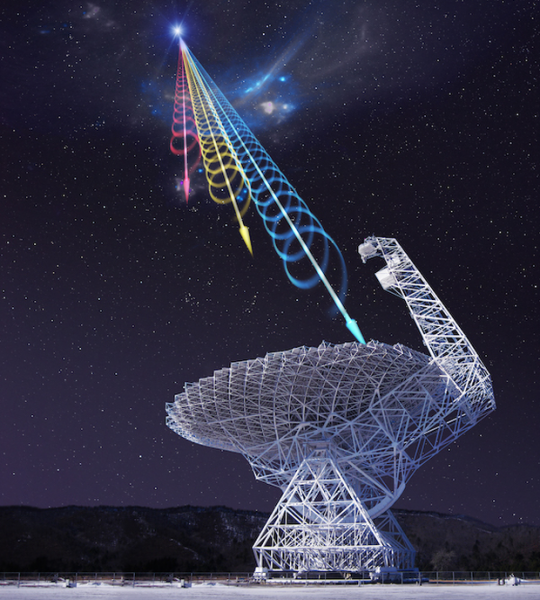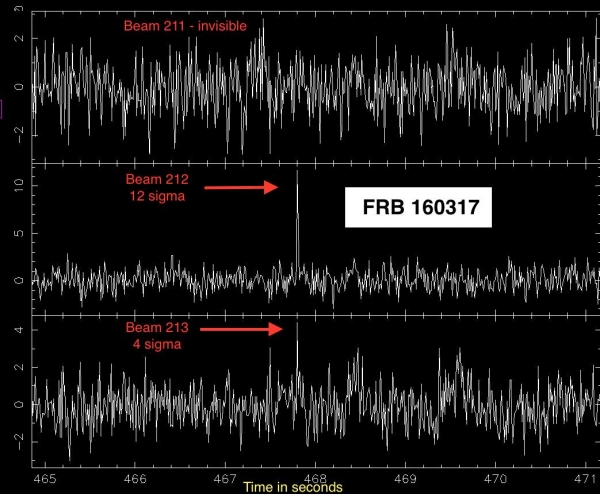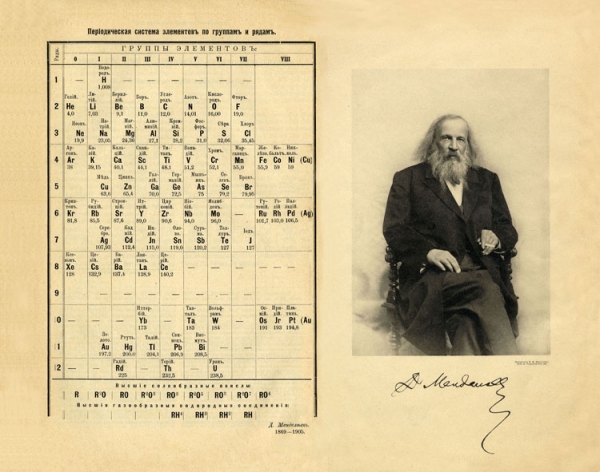
Radio waves of different lengths from a single source arrive at the telescope at different times because
the phenomenon of dispersion. Jingchuan Yu, Beijing Planetarium
Today on his page on Facebook Director of the Center for astrophysics and supercomputing Swinburne University of technology (Australia), Professor Matthew bales reported the first detection of fast burst (fast radioburst or FRB) telescope MOST. Splash found Manisha Caleb, who began to work on the telescope less than a month ago.
Today it is known less than twenty-FRB bursts (previously part of such phenomena, called peritonei, at first very surprised the scientists, and then ended up coming from the nearby kitchen, while opening the door of the microwave). The first quick burst, was published by Lorimer astrophysicist in 2007, although he has used archival data and the surge occurred in 2001.

Registered quick burst. Two channels (212 and 213) clearly record the arrival of a powerful pulse, which instantly disappears. Matthew Bailes, the telescope UTMOST
The origin of bursts is still unclear – it should be something very powerful and compact, for example, colliding neutron stars, neutron star collapse to a black hole or a single burst of energy before the supernova explosion. Scientists joke that now there are more theories than bursts. The power of such events is very high — one second is allocated the same amount of energy as the Sun produces in 10 thousand years. The short signal indicates a small source size, of the order of hundreds of kilometers.
Due to light dispersion of short waves arrive earlier than long (goes sprawling front passing through cold plasma in space). In the level of dispersion to determine how far is the source — everything indicates that it is not in our Galaxy. Despite the fact that at the moment the nature of FRB is not known, they helped to validate our knowledge of the intergalactic matter is the variance of signal fully confirms the previously formulated ideas about the temperature and density of plasma and actually the entire baryonic matter.
Molonglo Observatory Synthesis Telescope (MOST, the Molonglo radio telescope synthetic aperture) is the largest radio telescope in the southern hemisphere. This is 7744 separate antennas, which are combined into two 800-metre-long sleeves, elongated in the direction East-West. The total collecting area of the antenna is 18 thousand square meters. The main scientific goals of the program BURST of the Molonglo telescope is the search for new radio bursts, the discovery of pulsars and track their individual class – rotating radiotransmitter. After a five-year break caused by modernization, the telescope has recently resumed work. According to preliminary calculations, a year occur several hundred bursts, which passed unnoticed. The researchers expect that with the introduction into service of new equipment (telescope when this was changed to the name UTMOST – upgraded telescope MOST) will soon get a significant amount of new data. Due to such orientation of the telescope the accuracy of determination of coordinates of the FRB of bursts is about 10 arc seconds in the East-West and entire degrees in the direction North-South, which significantly complicates the search for the source of these bursts by other telescopes. Planned for the near future with additional equipment upgrades expected to enhance the accuracy of reception of the bursts.
Marat Musin







